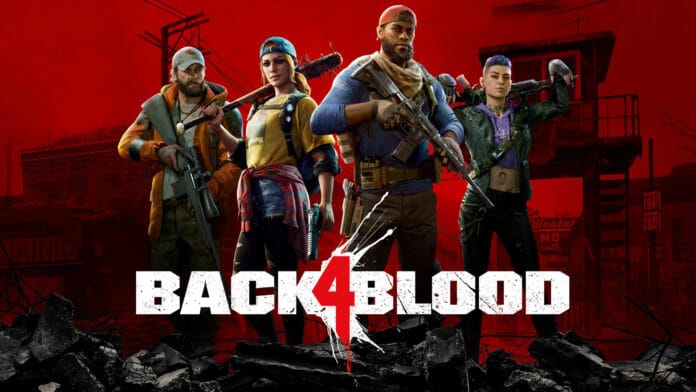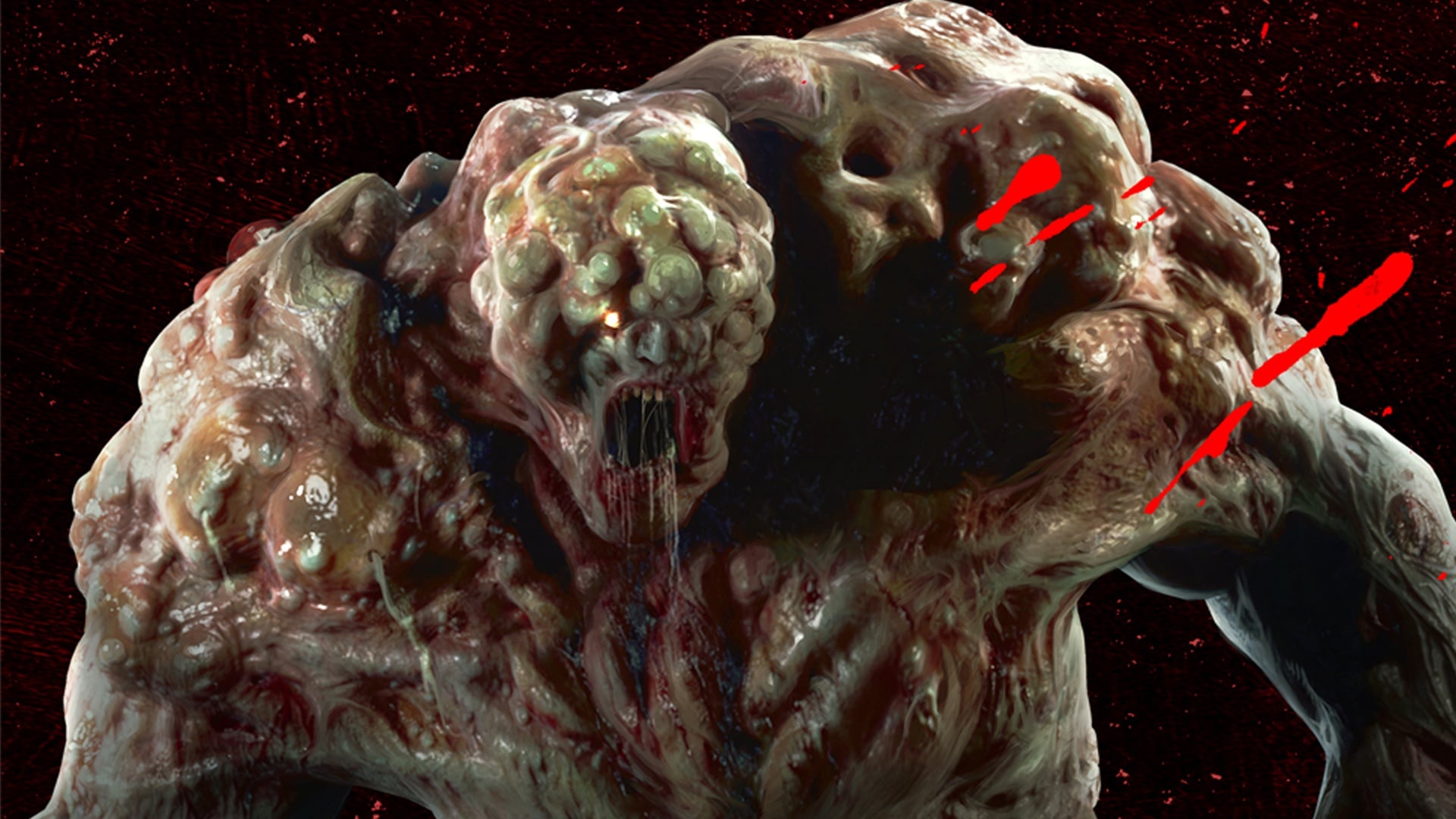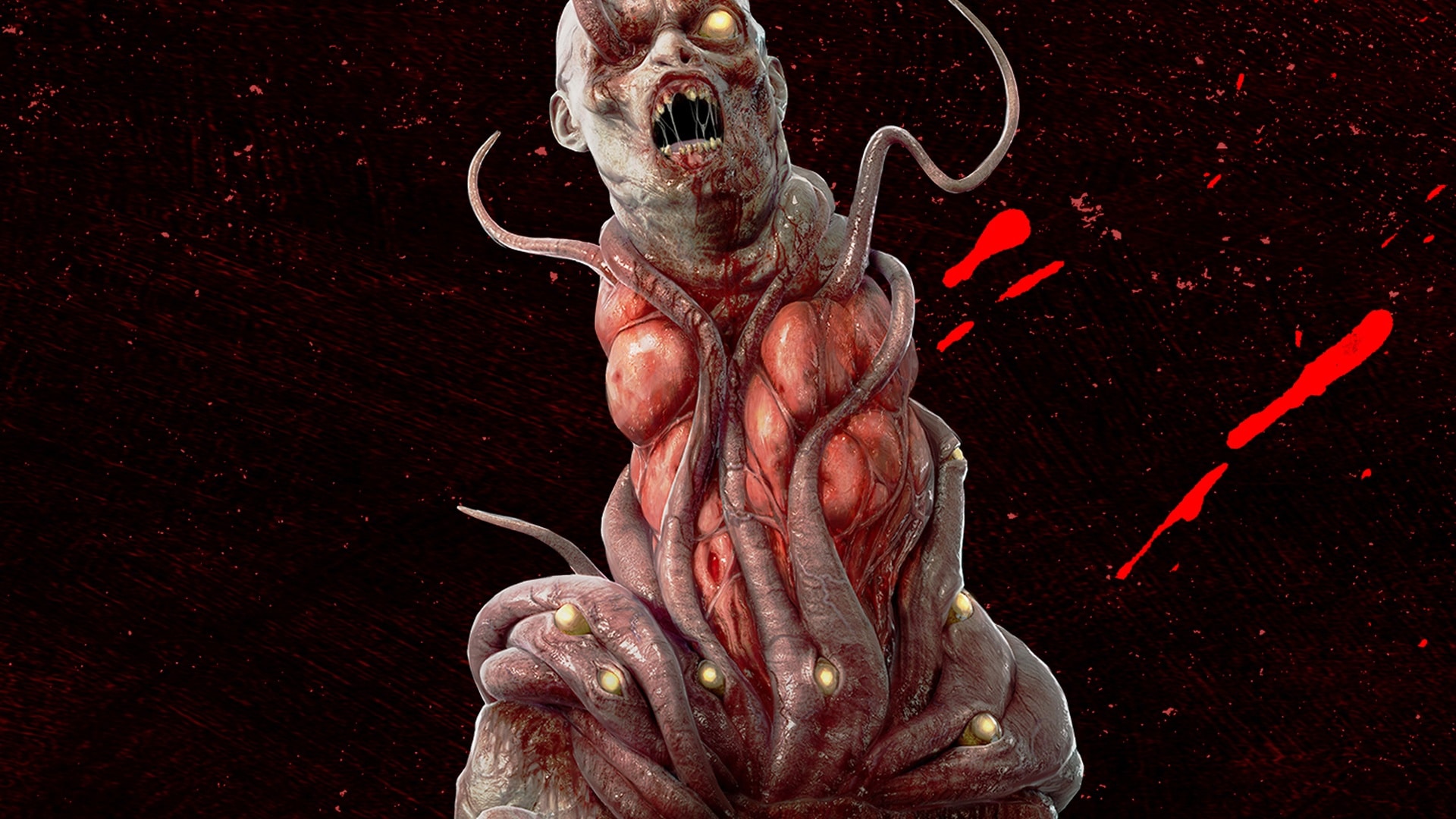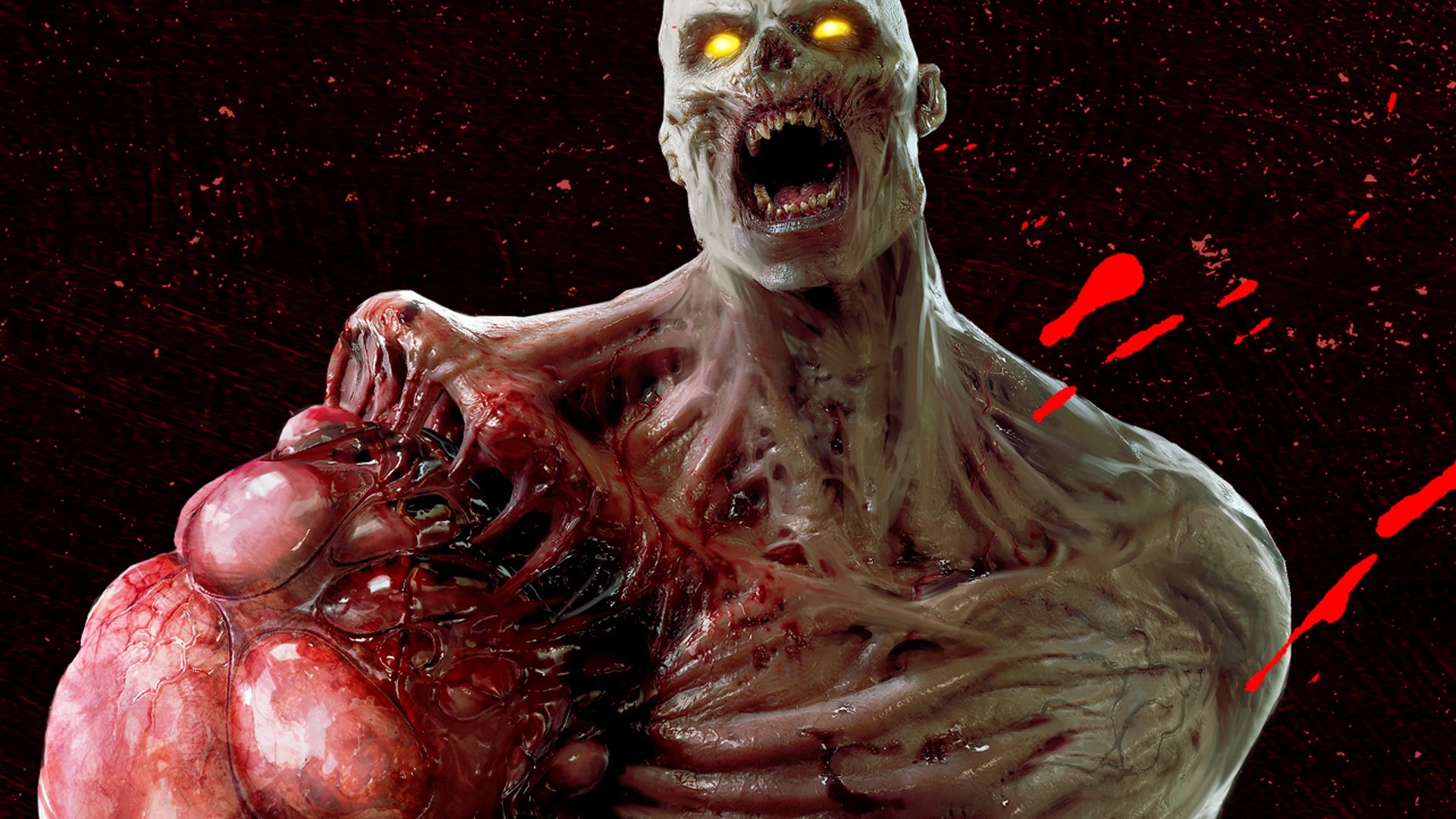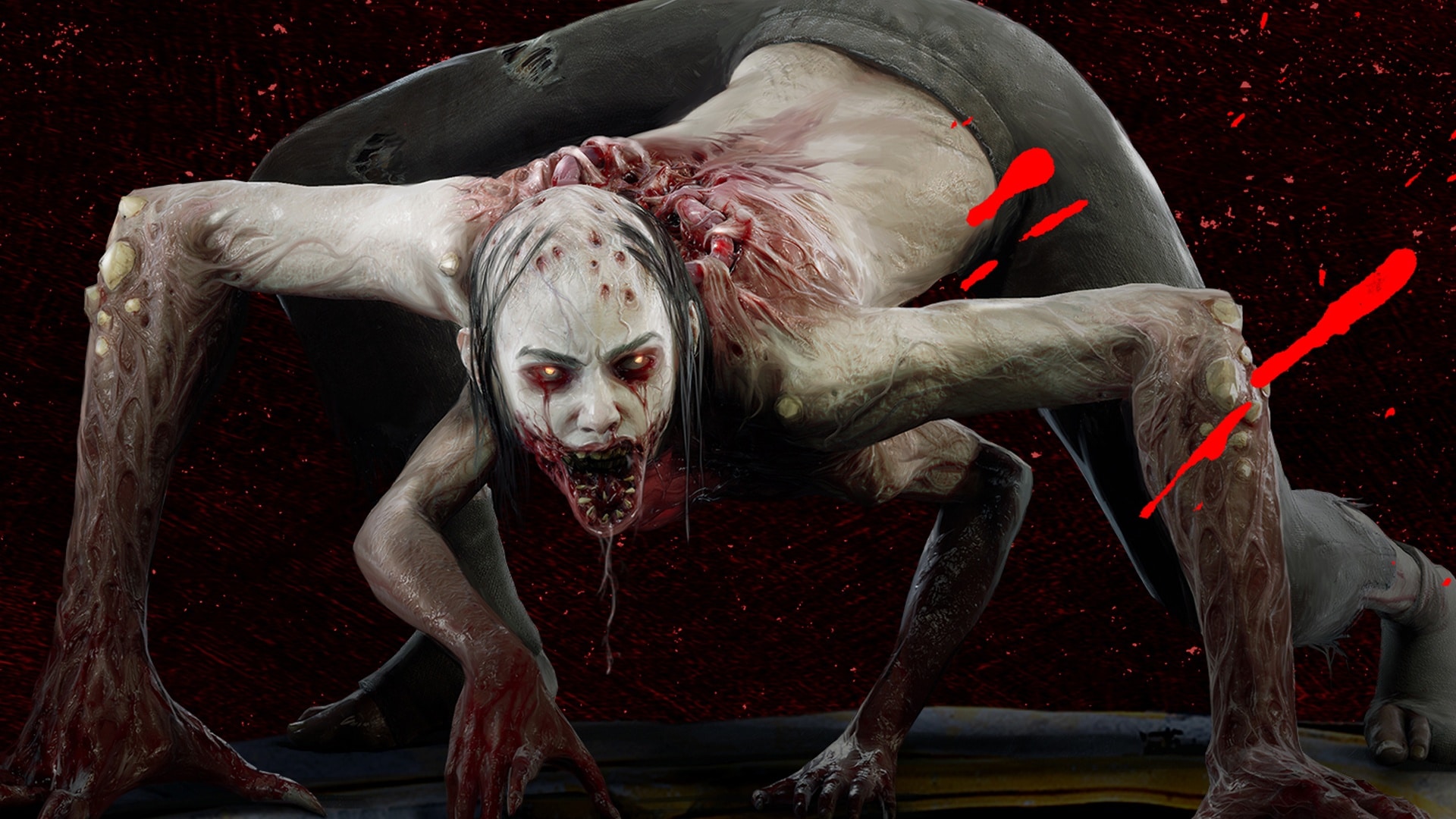Back 4 Blood revives the old Left 4 Dead co-op formula with new ideas. But for every good approach comes a bad one.
Thirteen years ago, the video game world was a different place. Zombies weren’t yet overrunning the industry by the dozen and the formula of a Left 4 Dead was fresh and unspent. But in one respect the past resembles the present: Good co-op shooters are still in short supply
And that’s where Back 4 Blood comes in, from the same developers as the popular zombie shooter: Turtle Rock Studios. After the first attempt to revive the old days with Evolve failed due to a greedy DLC concept, the studio is now trying again with Back 4 Blood.
Whether the innovations of the quasi-successor bring the old Left 4 Dead feeling into the year 2021 or whether Turtle Rock only half-heartedly serves the co-op niche that other developers shamefully neglect, you can find out in the test.
The heart: Co-op campaign
You need to be four players to fully enjoy Back 4 Blood. There is no option to compete in just two or three. Empty seats are always filled with other players or bots.
Before starting the game, you have the choice between three difficulty levels: recruit, veteran and nightmare. Even if you fail at the beginning, even in veteran mode, you should try to keep up and coordinate better. Because on Recruit, the typical Left 4 Dead feeling doesn’t come up yet. There is hardly any teamwork to consider, the different types of zombies are not much of a threat and shooting throughout is enough to reach the next saferoom.
The situation is different on Veteran, however. Even on medium difficulty, you’ll be wiped out faster than you can say zombie epidemic if you don’t coordinate with your team. Both text and voice chat are available for this.
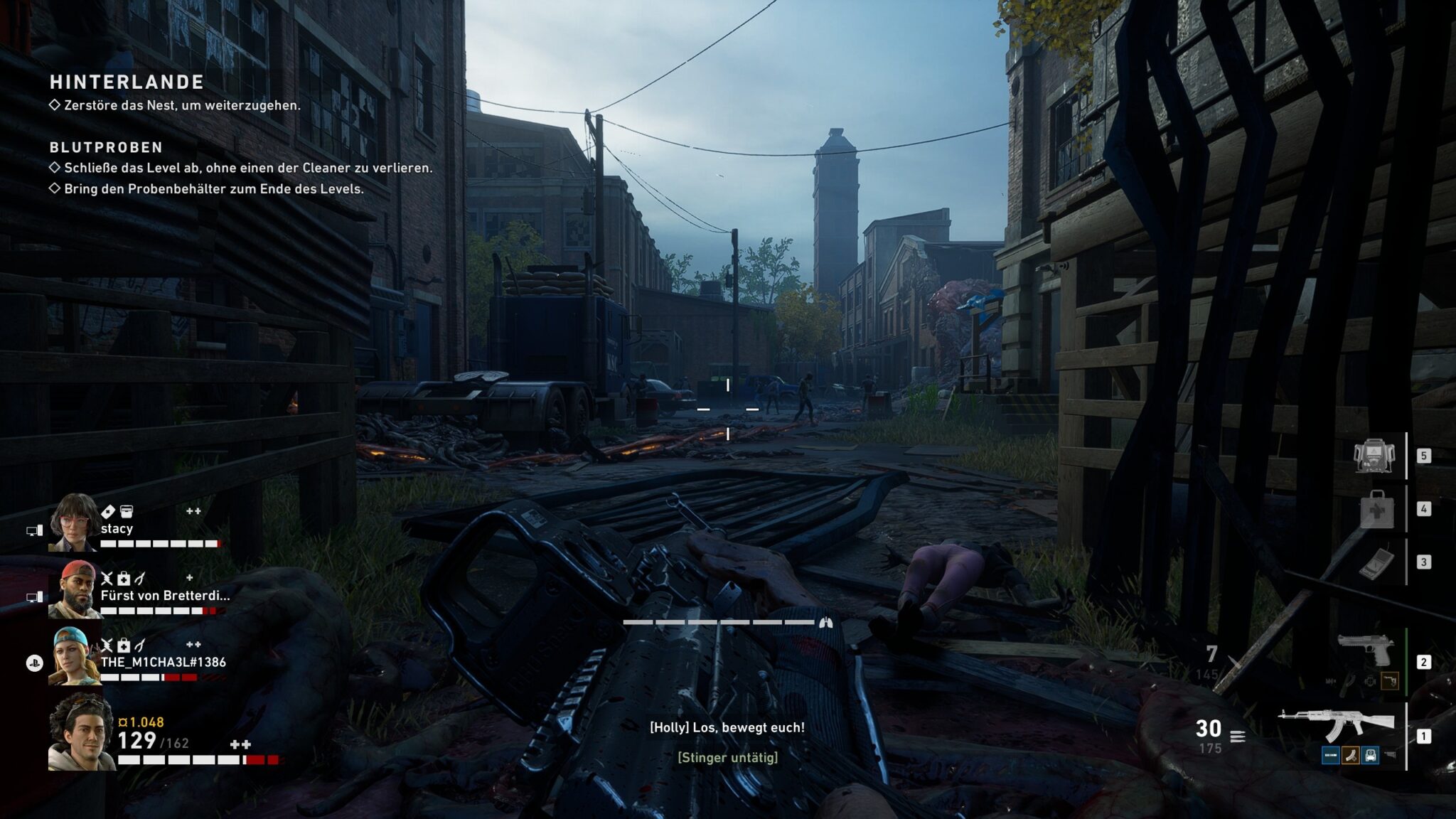
Who takes which weapon to prevent ammunition shortage? Which combination of the available characters with their individual abilities is the right one for our group? Who buys which special equipment to revive eliminated players or open rooms with valuable loot?
But once you’ve agreed, you’re ready to go. At first you won’t be afraid of the ordinary zombies, because individually they are no danger and can be eliminated in close combat without hesitation. But if you encounter a whole horde, the tables are turned. It becomes even more dangerous when special zombies like the Tallboy join in. The special variants have individual characteristics that you, as a player, should have on your radar. We introduce them to you in our picture gallery:
The most important component, however, is your pack of cards, which each player should create before the round to suit their style of play. Here’s how it works: Before you start a new game, you can choose to put together a deck of twelve cards for the different game modes in the menu or in the hub. The order of the cards is decisive: The cards are presented to you before each game according to the order you have decided on.
The card system is the only point in Back 4 Blood that promotes long-term motivation, which is why it deserves praise. On the one hand, the cards make you feel noticeably stronger, and on the other hand, you can create your deck to suit your play style.
If you like to play with melee weapons on the front line, there are certain cards that favour this style of play. For example, if you choose the knife and combine it with the ability to regenerate health through melee attacks, a noticeably different dynamic unfolds. It’s precisely this tactical depth that provides the pleasant feeling in your stomach that you already know from the quasi-predecessors.
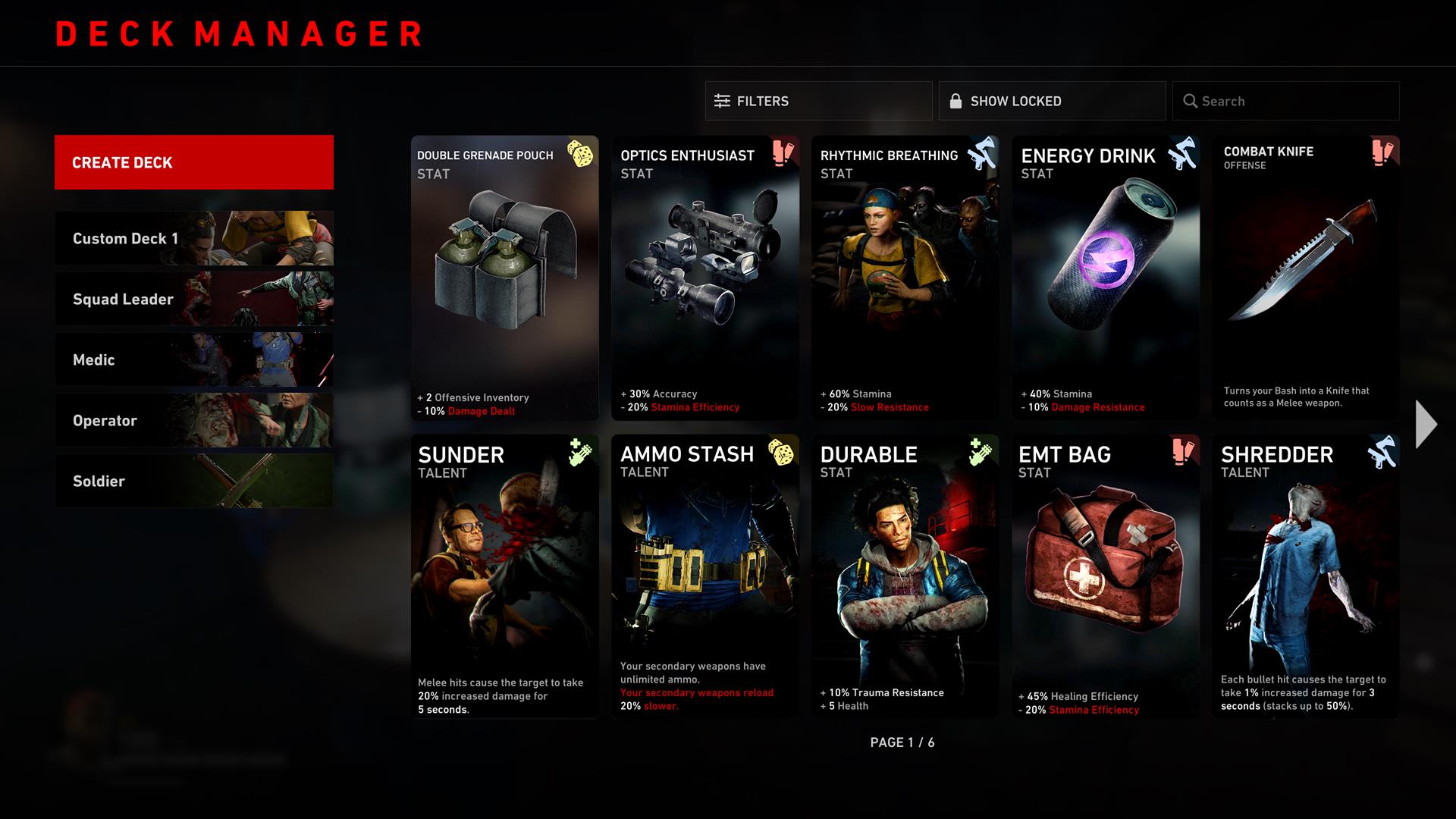
Despite these good approaches, the campaign of Back 4 Blood seems out of time. You make your way through individual zombie groups until you come to a place where you press a switch, for example, to clear a path. This will cause you to alert a horde. Once you have defeated them, you will usually continue along the path until you reach a saferoom.
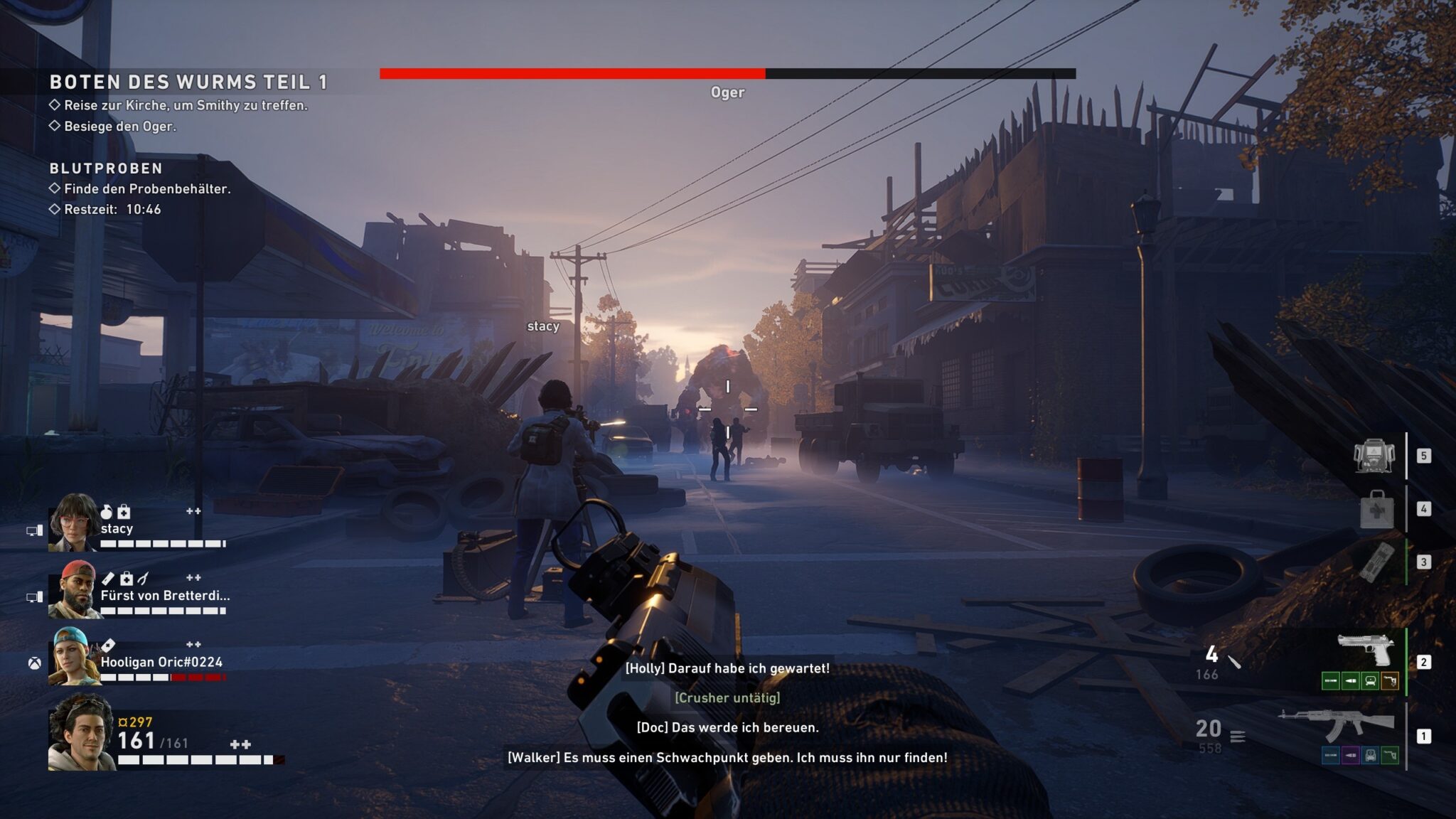
While there are exceptions, such as finding a severed hand to break a door code or destroying nests, the gameplay differences are marginal. Only a few mission sections stand out from the crowd. To distract hordes of zombies from other survivors, you have to go to a bar and turn on a jukebox. You then shoot your way through the masses of enemies to the sound of “Black Betty”. Back 4 Blood should have had missions of this kind much more often.
The campaign is divided into four acts. These are in turn divided into individual missions. Unfortunately, there is another downer: the individual missions are never particularly long or extensive, yet they are recycled in later acts – and this in a campaign that can be completed in six to ten hours. This is especially bitter when you consider that Back 4 Blood is a full-price 60-euro title.
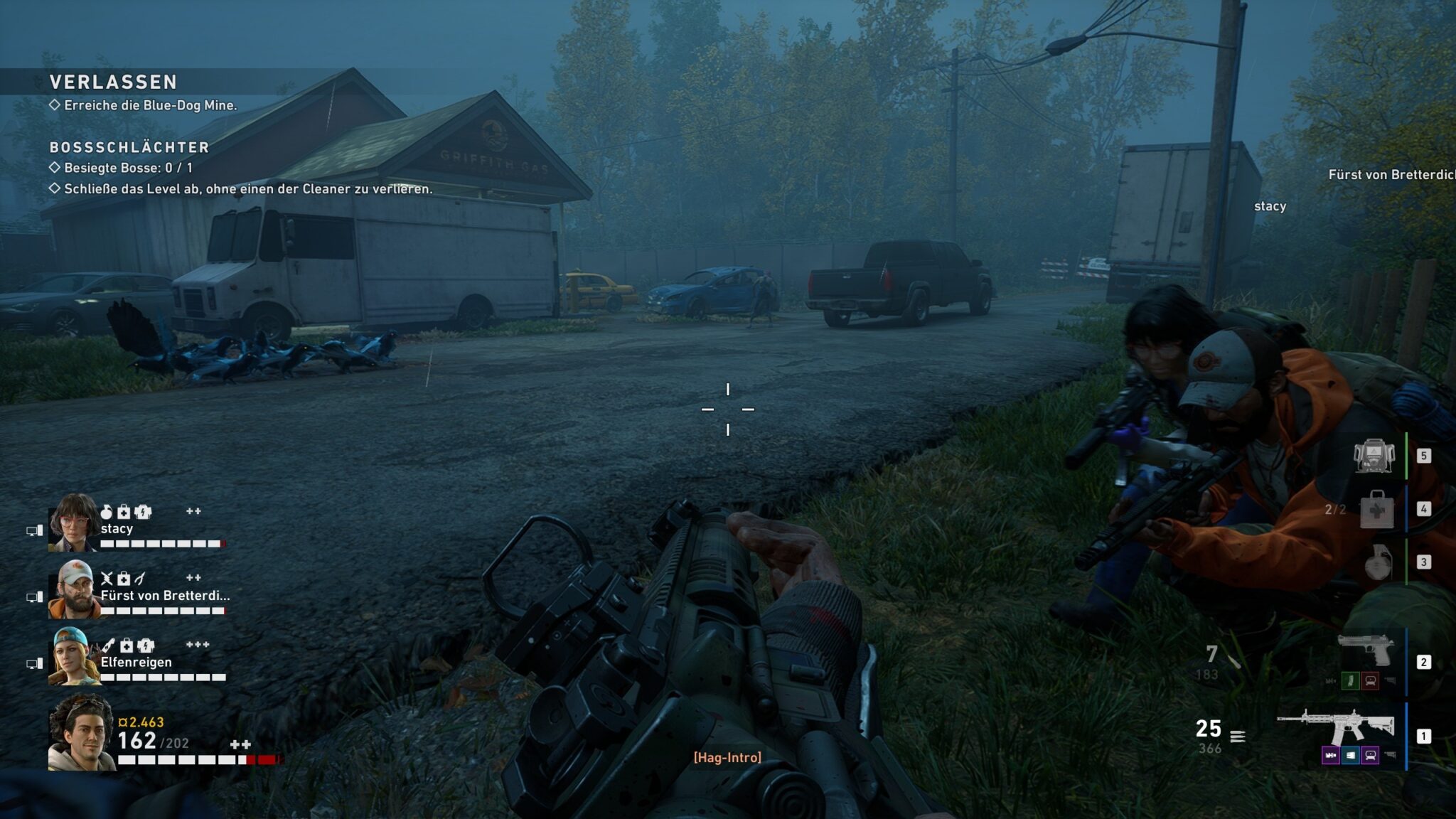
Table of Contents
Solo players look down the tube
Generally, Turtle Rock Studios would have done themselves a favour by putting the focus of Back 4 Blood on the co-op campaign. The developers rely too much on the co-op fun you have when playing with your friends, but aside from that, the gameplay feels piecemeal; the individual elements don’t mesh nearly as well as in Left 4 Dead.
Solo players are even worse off: They get their own progression system and are only allowed to use earned cards for the single-player mode. Trophies and statistics are also not recorded. Even before release, developer Turtle Rock reacted to criticism and promised to change this over time. At launch, however, everything remains as it was.
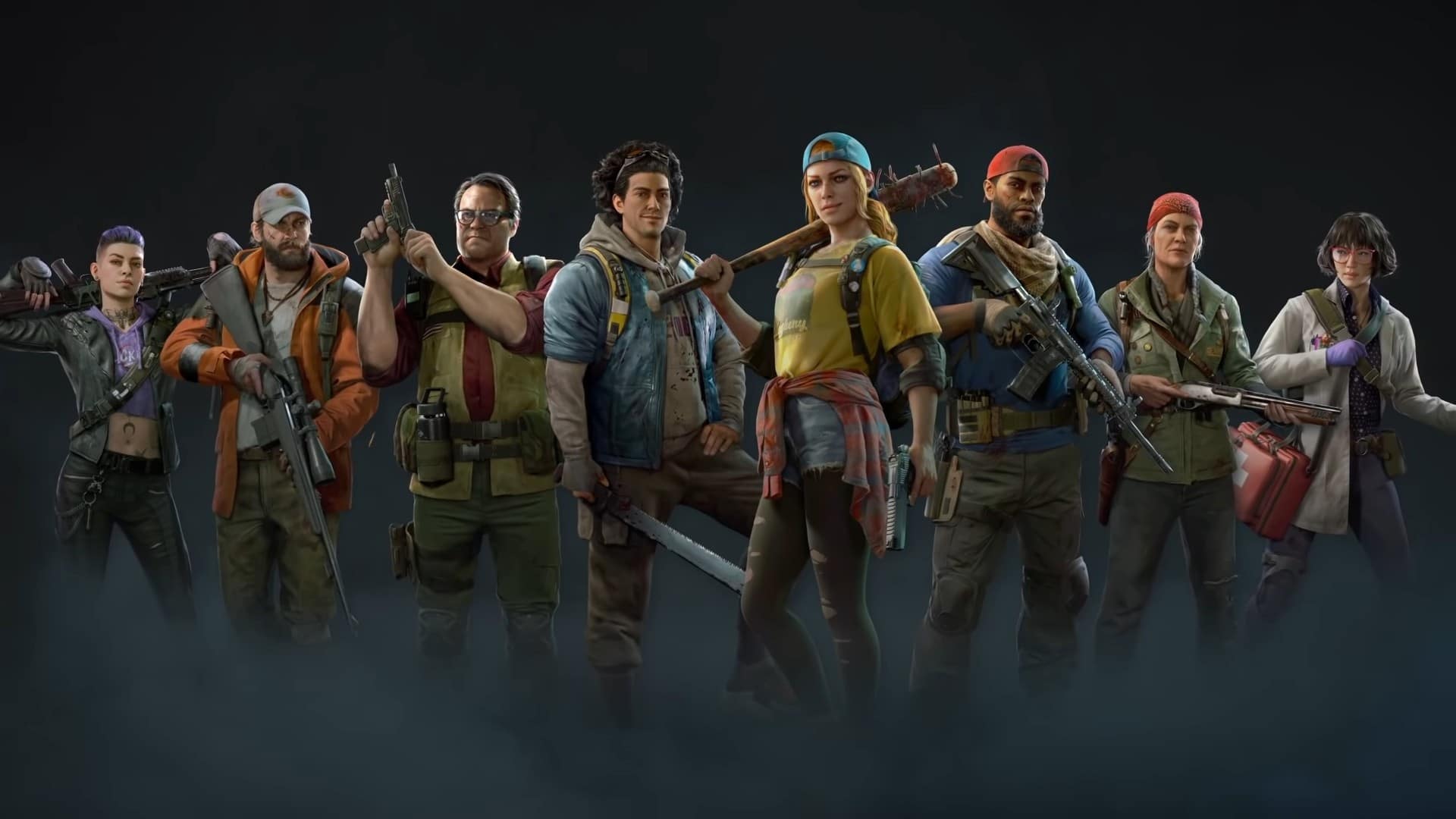
The “intelligence” of your computer-controlled comrades-in-arms makes your life even more difficult. They are so useless that you wonder why you are forced to drag them along as a solo player at all. The AI colleagues often get stuck in corners or shoot wildly into walls and ceilings when there are zombies behind them. But at least they use their special abilities at regular intervals, such as handing out ammunition. At least that makes them a little less useless.
As expected, anyone looking for a gripping story is in the wrong place in Back 4 Blood. The frame story can be summed up like this: Explosions garnished with heaps of “cool” sayings and a few irrelevant dialogues for dessert. This is told to you in rare cutscenes and monologue snippets of individual characters during a mission.
The annoying thing is that the game does contain more story. But you only learn about it if you play the campaign several times with different characters. A denser storytelling would have done Back 4 Blood much better.
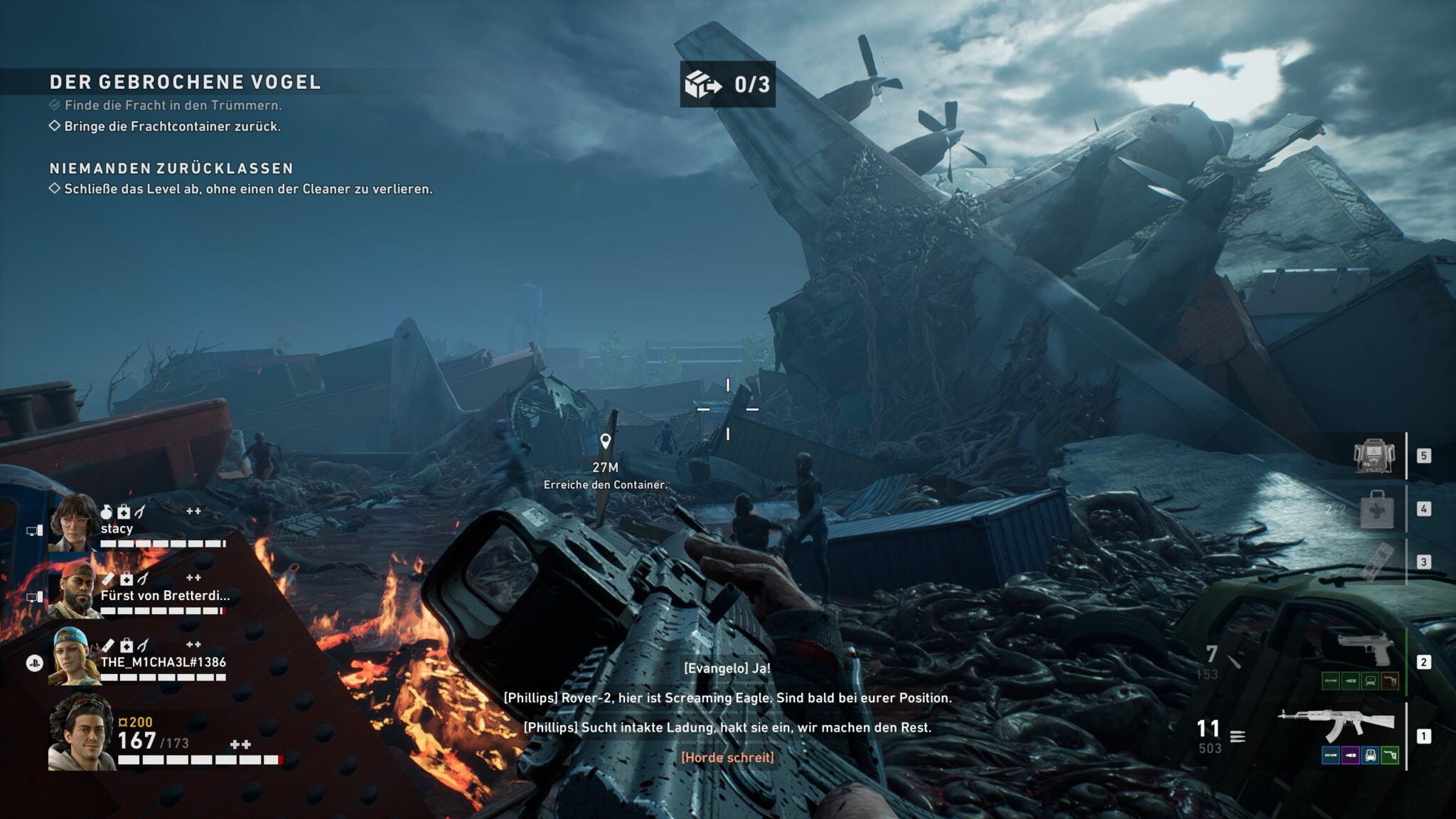
A too wild mix of different design elements
Turtle Rock tries to lighten up the rather dull gameplay with various approaches, but fails to dovetail the gameplay elements sensibly.
Among other things, there’s a loot mechanic like in Destiny with equipment in different quality levels. You can either find weapons and attachments or buy them in the Saferoom. But why can’t you take the attachments off your weapon and have to throw away all the attachments when you change weapons? Furthermore, you lose your loadout if you die too often and have to start again. This makes rare finds much less interesting and prevents you from putting together an arsenal.
Another element that you wouldn’t expect in a game like Back 4 Blood are the rogue-lite mechanics. If you die too often, you don’t start from the beginning, but the checkpoints feel too far apart, especially on higher difficulty levels.
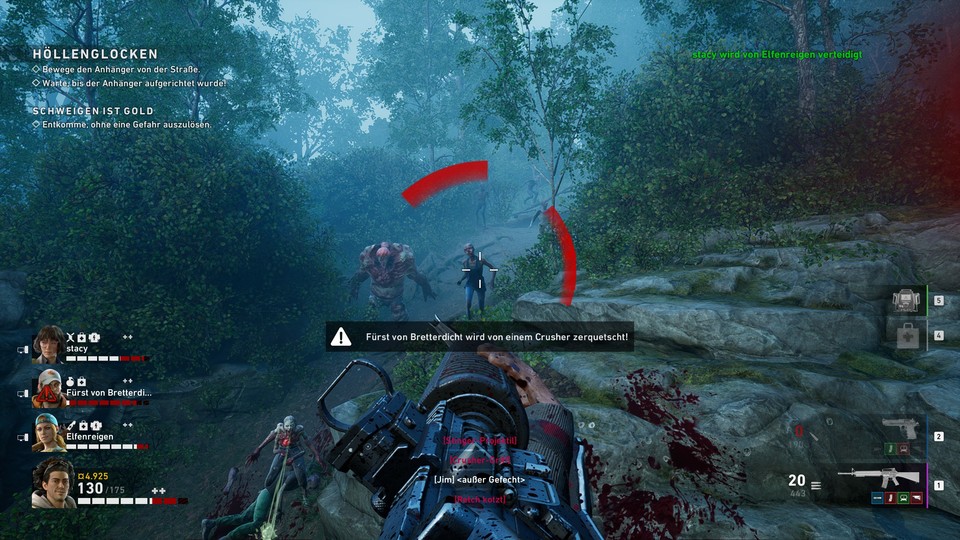
As usual in Rogue-lites (as opposed to Rogue-likes), however, not all your progress is gone. For every mission you complete, you get points that you can use to buy skins, graffiti and – more importantly – cards for your deck.
Mission items and loot are not always hidden in the same places in Back 4 Blood, but this only has a marginal effect on the gameplay. Much more important are the “Corruption Cards” randomly selected before each mission. These provide, for example, armoured enemies, more traps that flush out hordes, or the appearance of special zombie species.
On the one hand, this is a great approach to get players to replay the campaign, but on the other hand, it breaks with the rogue-lite elements in the game. If you’re unlucky enough to draw several cards at once, which pushes the difficulty up exponentially, it can quickly become unfair and chaotic.
If you have to play half the act again because of the Corruption cards, it is demotivating, especially on the higher difficulty levels. In addition, you lose your arsenal of purchased weapons and start again with the basic types.
Which brings you directly to the next problem: how the high difficulty level is created. Instead of making the unique zombie types more difficult so that they require more tactics and interaction, you simply throw three to four of these zombies into the current arena. If you’ve also drawn the Corruption card, which armours enemies, enemies quickly feel like bullet sponges
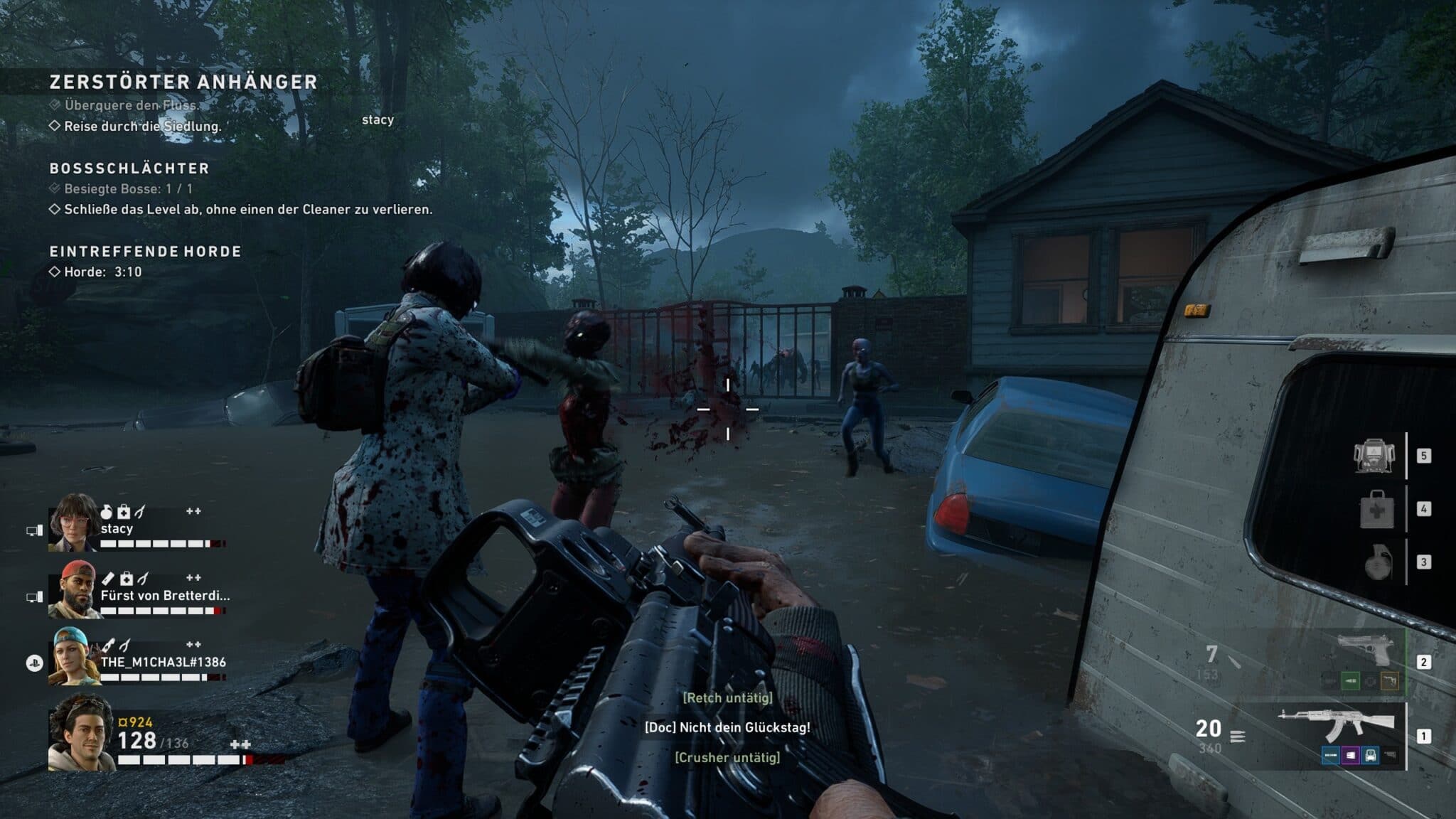
Multiplayer is a wasted opportunity
The PvP mode “Swarm” is similarly dull. You compete against each other in two teams of four players on maps known from the campaign. It is randomly selected which team will be the first to take over the zombies or the so-called cleaners in the game. The winner after three rounds is the team that survives the longest.
Unfortunately, the maps are too small to be able to act tactically. If you take on the role of a large zombie, the opponents can normally eliminate it directly. In general, the swarm mode does not seem as sophisticated as the Versus mode from Left 4 Dead. After all, a campaign with player-controlled opponents is still something special to this day.
It is therefore all the more surprising that this mode is not included in Back 4 Blood, even though the developers have taken their cue from the quasi-predecessor in many respects. In addition to the Versus mode, Left 4 Dead 2 also has two other multiplayer modes to offer – Scavenge and Survival. It is regrettable that twelve years later, Back 4 Blood comes across as considerably more weak-blooded.
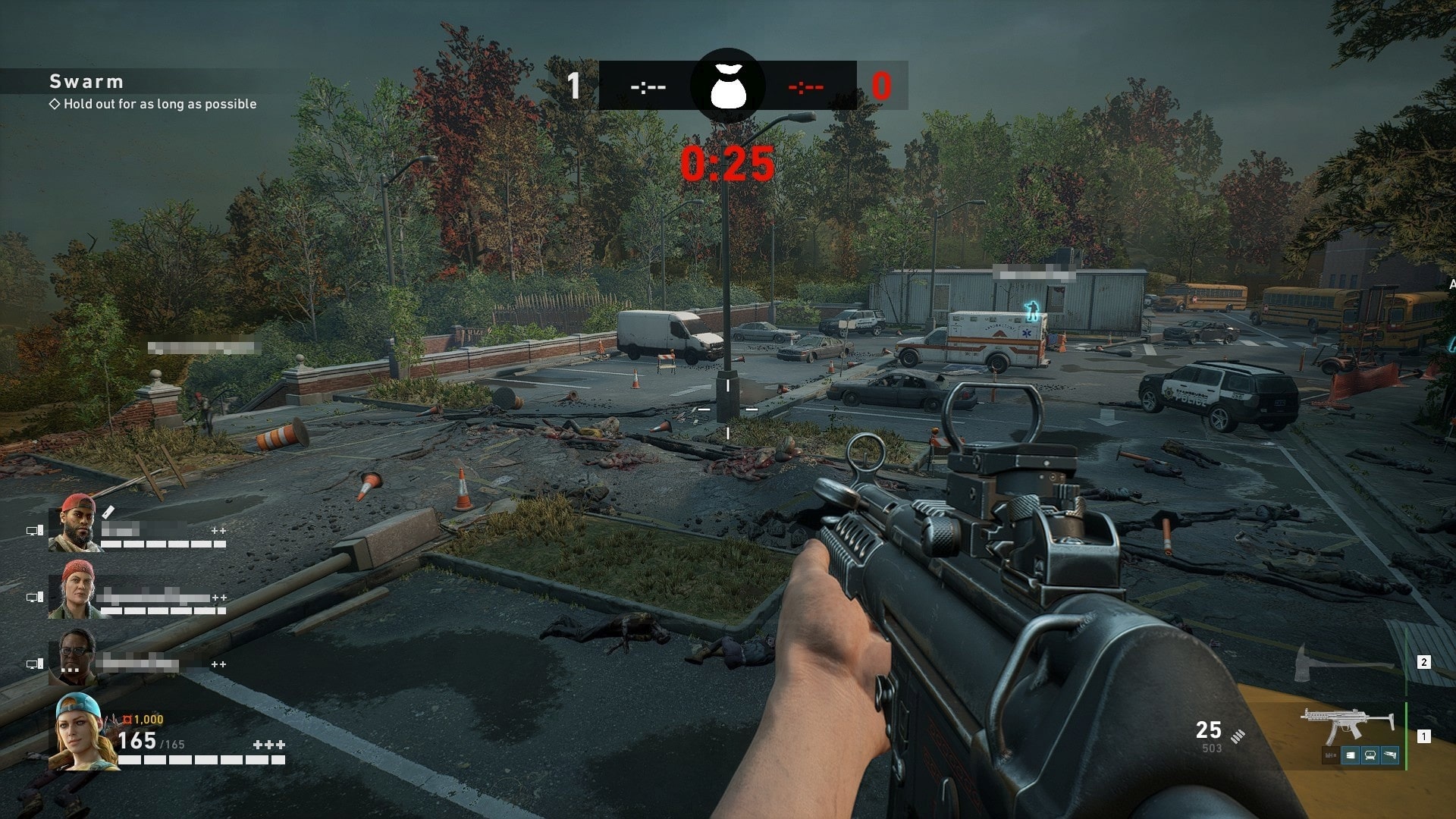
Picturesque landscapes covered with giblets
Back 4 Blood manages to conjure up an eerie atmosphere on screen throughout. Although the level of detail is not overly high, this is made up for by the really beautiful lighting atmosphere.
Fields, towns or sewers look coherent and are positively gruesome in their decoration. Either by design, or because you visited with a can of red paint. It’s all the more unfortunate that locations are repetitive and there aren’t too many of them.
Back 4 Blood only cuts back on the very creatures you fight throughout the game: the common zombies. There seem to be a lot of twins among the living undead, because variety is written rather small. Yet the history of pop culture offers so many fine examples of what can be done with the simple concept of the undead.
Furthermore, the gore factor is surprisingly low for a zombie game. Blood flows in great quantities, but you have to do without flying limbs. That doesn’t sound too dramatic at first, but the hit feedback in particular would benefit from it. Since our arsenal of weapons could use a little more oomph anyway, this would be a positive side effect.
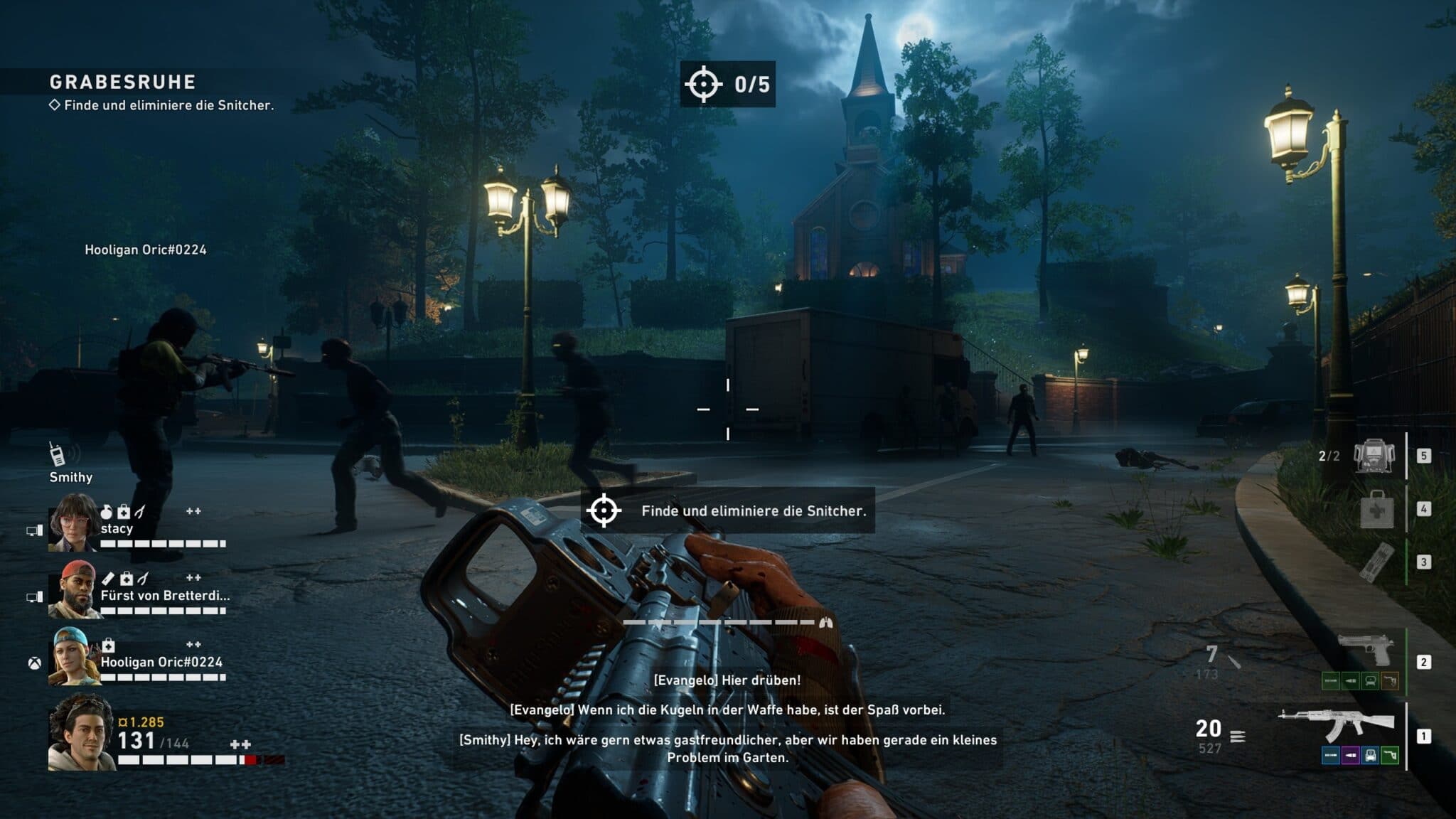
At least technically, Back 4 Blood can hardly be faulted. Even with large hordes, the FPS did not drop significantly. Likewise, I hardly noticed any bugs during my entire playing time. Only in the second act did a mission have to be restarted because the last container in a salvage mission could not be attached to the helicopter. But since everything else ran smoothly, this was bearable.
Crossplay between PC and consoles works flawlessly between all available platforms. I never experienced any rubberbanding, lags or other problems with various other players.
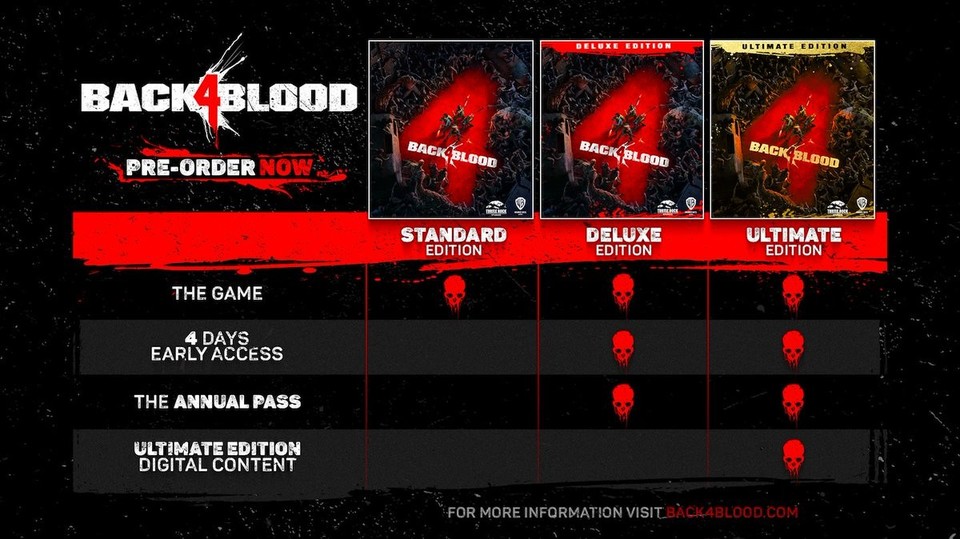
The editions at a glance
Back 4 Blood offers a Season Pass and three different editions for release. To help you keep track, we explain what each version offers.
Standard 59,99 Euro
- Basic Game
- Skin Pack: Fort Hope Elite – Weapons
Deluxe 89.99 Euro
- Basic Game
- Skin Pack: Fort Hope Elite – Weapons
- four days early access to Back 4 Blood
- Annual pass: three future downloadable contents with new story, playable characters, special mutant infected and more
Ultimate 99.99 Euro
- Basic game
- Skin Pack: Fort Hope Elite – Weapons
- four days early access to Back 4 Blood
- Annual pass: three future downloadable contents with new story, playable characters, special mutant infected and more
- Skin Pack: 4 Characters (Battle Proven)
- additional in-game digital items: rare banners, crests, graffiti, titles
Annual Pass 39,99 Euro
- three new campaign stories
- new playable characters
- new infected
- “and much more “
The outdated funding model may be dangerous for Back 4 Blood
Charging full price for Back 4 Blood is already relatively brave considering the game time. But to put content behind a Season Pass on top of that is a truly questionable decision. Back 4 Blood would have benefited from a lot more content, especially at release. The competition has long since abandoned this model and shows how it can be done better. Be it with a Battle Pass or cosmetic items. At least those who own the Xbox Game Pass can play Back 4 Blood at release without additional costs.

